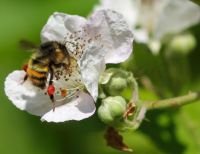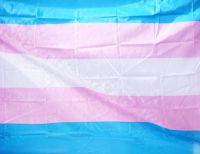Unprecedented field work leads to new book about how to stop youth suicide from spreading
Q&As
This article contains information about suicide that may be upsetting to some people. Anyone who is in crisis or considering suicide can call the Canada Suicide Prevention Service toll free at 9-8-8 or visit the online chat service at 988.ca. In B.C., the Crisis Centre BC suicide hotline is at 1-800-784-2433.
UBC sociologist Dr. Seth Abrutyn gained insight into suicide contagion through years of field work in a small U.S. community which he calls Poplar Grove. The name is fake but the community is real. Sixteen young people ended their own lives there between 2005 and 2018. All were connected to the same high school.
Dr. Abrutyn and research partner Dr. Anna Mueller of Indiana University have compiled their learnings into a new book, Life Under Pressure. We spoke with Dr. Abrutyn about the work.
What did you set out to find in Poplar Grove?
Existing research hadn’t really given us answers about how suicide may spread from one person to another, or why. We didn’t know how or why clustering happens in one place versus another. Consequently, we wanted to look at how communities build and maintain different narratives about why suicide happens and whether this might make youth more vulnerable to the risk of suicide.
Very rarely do we find a researcher in the field when a cluster happens. We were in the field for about two and a half years, and three suicides occurred while we were there. So we were able to get a sense of the community’s situation prior to a suicide, and then observe what happened after the suicide and talk to people when it was still fresh in their minds.
What was noteworthy about the young people who took their lives?
In each of the three clusters we were able to confirm, there was a really high-status girl who took her own life. These girls were popular, had high GPAs, were three-sport stars and, from the outside, seemed to have everything going for them. They didn’t exhibit outward signs of mental health problems. So these were people who would be totally unexpected to die by suicide, which was confusing for the adults and youth, causing them to rethink “why do people die by suicide?”.
How did people in the community process these suicides?
The local newspaper, the school, the parents and the youth all tried to make sense of it. The story they came up with was that this community has a really high amount of academic, athletic and social pressure that causes emotional distress and an intense fear of failure. And because it’s such a tight-knit, homogenous place, there’s no escaping it. The youth saw their reflections in the various people they knew who died, and some began to see suicide as a somewhat accessible option.
Why did you think it was important to turn all this into a book?
We felt a book like this could provide other communities suffering from a youth suicide problem with strategies that might help reduce the likelihood of needless deaths. We worked hard to use the voices of youth and adults we spoke with so that any teenager, parent, school staff member, community stakeholder or social scientist could pick it up and find something that puts their own situation into a broader perspective.
What sort of strategies does the book recommend?
First, schools should have a trauma-response plan in place that includes crisis-response counsellors—not just for kids, but for staff, too. Talking about suicide is important. These plans should include empowering youth by listening to what they need.
Second, mourning rituals are important for allowing people to grieve and for giving youth a chance to mourn. But it is a tricky balance between appropriate mourning and glorifying suicidal behaviour.
Third, while it is difficult to challenge a culture that valourizes achievement and perfection, finding ways to intentionally allow kids to be kids is imperative. In addition, resilience and coping skills are vital to helping kids navigate the stress.
Finally, building trust between adults and youth matters for cultivating healthy help-seeking behavior.
Ultimately, what do you hope readers take away from Life under Pressure?
We hope that readers find hope. For youth, we want to show them they aren’t alone, and that seeking help from an adult is important no matter how afraid or ashamed they may feel. For parents, we want them to hear and see the distress many youth are experiencing, and give them the green light to ask for help, too. Talking to your child about suicide, like you would about drugs, alcohol or sex, is safe and protective. For schools, we want them to understand that how they respond to a youth in distress or to a tragedy goes a long way to either helping the school community grieve and heal healthily, or to causing mistrust between youth and adults. For communities, we want to send the message that suicide prevention is everyone’s job and may be as simple as asking a kid how they are doing.
The authors will be in conversation with Malcolm Gladwell at a launch event May 6 in New York City. Details: https://www.92ny.org/event/anna-mueller-seth-abrutyn-and-malcolm-gladwell














